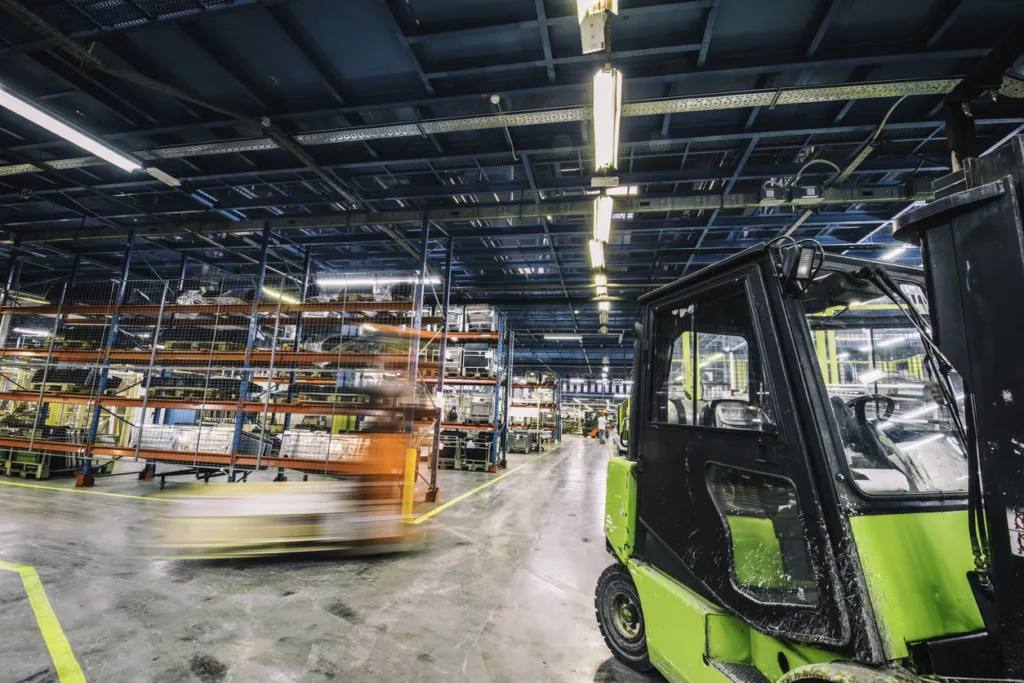Forklift trucks are one of the main causes of accidents – and fatalities – in the industry. Understand how to avoid them with technology.
Forklifts, also known as forklifts, are indispensable tools in industry and warehouses for moving and transporting heavy loads. However, their improper or careless use can result in serious and even fatal accidents. These accidents represent a persistent problem in the work environment and require urgent attention.
According to a report by the U.S. Occupational Safety and Health Administration (OSHA), it is estimated that about 85 people die each year in the U.S. due to forklift-related accidents, and approximately 34,900 people suffer serious injuries.
As for the causes, in many cases human error plays a crucial role. Lack of proper training is a common factor and in many cases is combined with inattention, fatigue and negligence when operating.
Impact of accidents.
Forklift accidents have serious consequences for both workers and companies. Operators can suffer disabling injuries and even loss of life, leaving families devastated. In addition to the human impact, companies also face economic consequences, including medical costs, compensation, regulatory penalties and reputational damage.
It is estimated that 90% of forklifts will be involved in an accident during their lifetime. If we take into account the hidden cost that each accident entails for the company, and the number of forklifts that some sectors use due to the type of operation, we can easily see how they can become a source of innumerable economic losses in some companies.
Solutions and preventive measures.
To address the problem of forklift accidents, it is essential to implement solid preventive measures. Some key solutions, and basic yet often overlooked, are as follows:
- Training and certification: Provide comprehensive training to forklift operators, teaching them safe driving best practices, safety rules and standard operating procedures.
- Regular maintenance: Conduct regular inspections and maintenance of forklifts to ensure that they are in optimal operating condition.
- Supervision and enforcement: Establish effective workplace supervision to ensure compliance with safety standards, as well as to correct and prevent risky behavior.
- Safe design of the work environment: Optimize the design of the workspace, such as proper placement of signage, clear obstacles and well-defined traffic routes.
- Investing in technology: The inclusion of technology in the prevention of forklift accidents plays a crucial role. Systems are available that increase operator situational awareness and reduce the risk of accidents.

Technology that prevents accidents: Meet the Drixit Spotter.
The Drixit Spotter, for example, can detect pedestrians in the vicinity of the forklift. This intelligent technology provides visual and audible alerts to both the operator and the pedestrian when it detects proximity, allowing you to take corrective action quickly. In addition, the Spotter can record data and generate reports on detection events, allowing companies to perform analysis and continuous improvement of their safety practices.
The inclusion of technology in forklifts provides significant benefits. First, it improves the safety of the operator and those in the work environment by reducing the possibility of collisions and entrapment. In addition, avoiding collisions also prevents damage to products, equipment and structures by avoiding unintentional bumps and collisions. This reduces costs associated with repairs and replacements, as well as equipment downtime.
In summary, the incorporation of technology in forklift accident prevention, such as the use of proximity detection systems, offers an effective solution to improve safety in the industry. These technological tools help operators make more informed decisions and avoid collisions, protecting both workers and company assets. By investing in safety technology, companies can strengthen their efforts to create safer work environments and reduce the risks associated with the use of forklifts.

